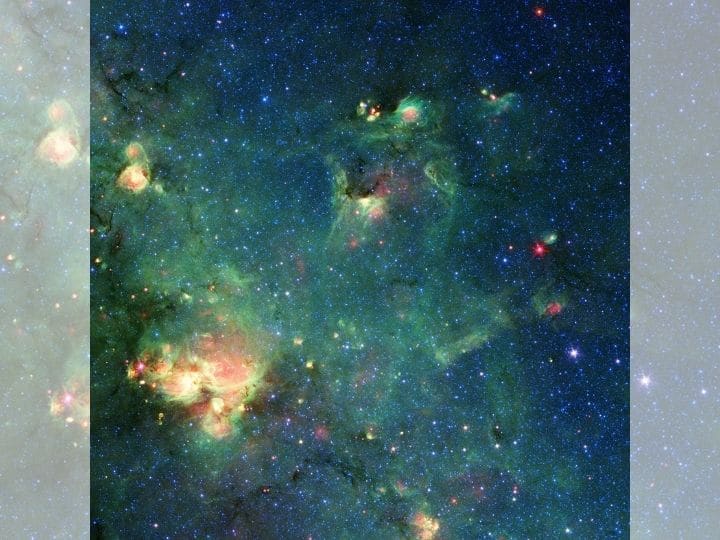New Delhi: What do you see in the picture above? Don’t the bright areas look like Godzilla’s eyes and nose?
In fact, this is an image of the nebula taken by NASA’s Spitzer Space Telescope. A nebula is a cloud of dust and gas in outer space, which forms when a dying star ejects gas and dust as a result of an explosion or supernova.
Countless stars are formed from nebula material. Dust clouds obscure the area, and hidden areas can be detected with the help of infrared light that penetrates the cloud. Infrared light has a longer wavelength than visible light.
Colorful nebula in the form of Godzilla
The image of the Godzilla-like star-forming region has been processed by astronomer Robert Hurt of the California Institute of Technology. He’s made most of the images from Spitzer’s data since its launch in 2003. Godzilla is seen photographed by Hurt.
On its website, NASA says he says the eyes and mouth in the photo have migrated to him “Godzilla.”
Look at the image below, and you’ll agree with Hurt.
Still not sure? Check it out Link Here.
However, NASA has determined that any resemblance to Godzilla is “purely fictitious”.
The Godzilla-like nebula is located in the constellation Sagittarius, along the plane of the Milky Way. The upper right area where Godzilla’s cosmic eye and nose are located contains stars, whose distance from Earth is unknown. Godzilla’s right hand is located in the nebula about 7,800 light-years from Earth, and this bright region on the lower left is known as W33.
Another pattern has been seen in Spitzer’s photo
The human tendency to perceive certain meaningful images in random or ambiguous visual patterns, such as the tendency to detect Earth-bound objects in images of the universe, is known as Pareidolia.
Scientists also found interesting objects in Spitzer’s images, such as the black widow spider, the Jack-o-Lantern, the exposed human brain, and the Starship Enterprise.
–


